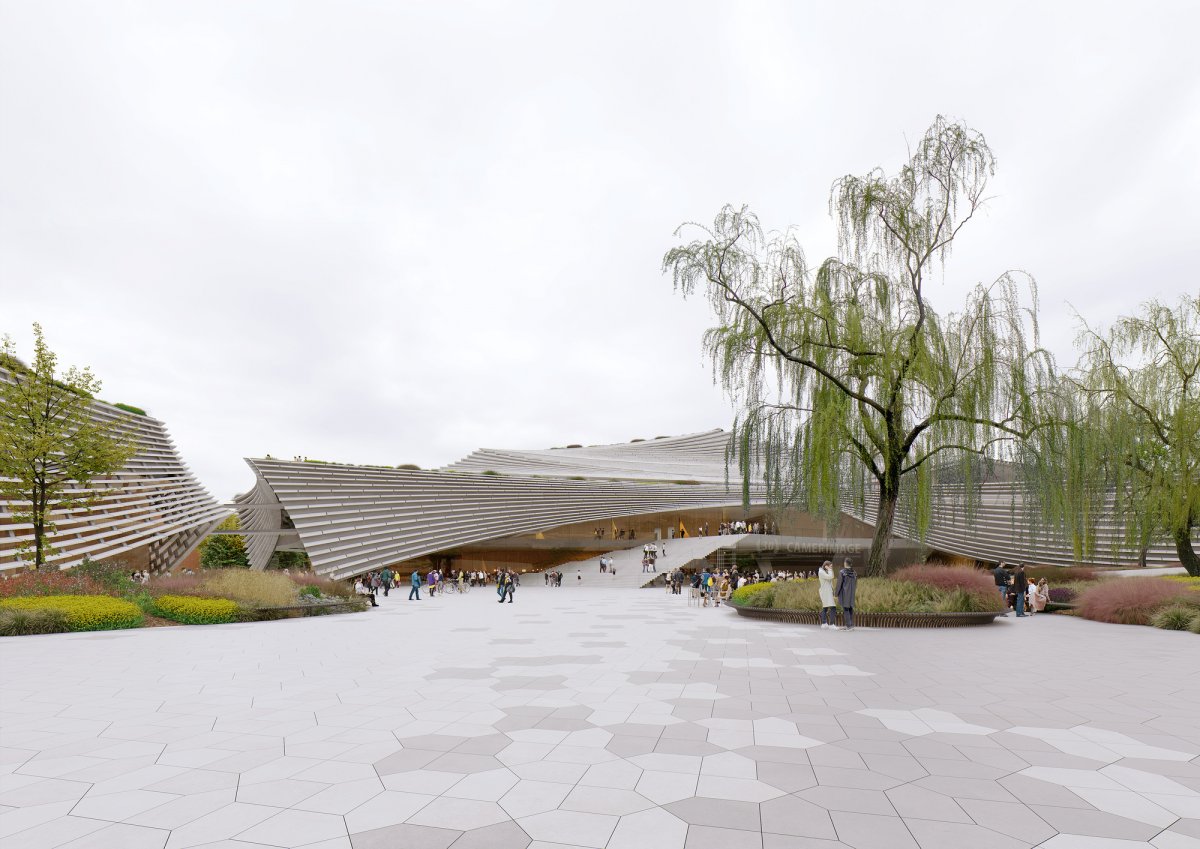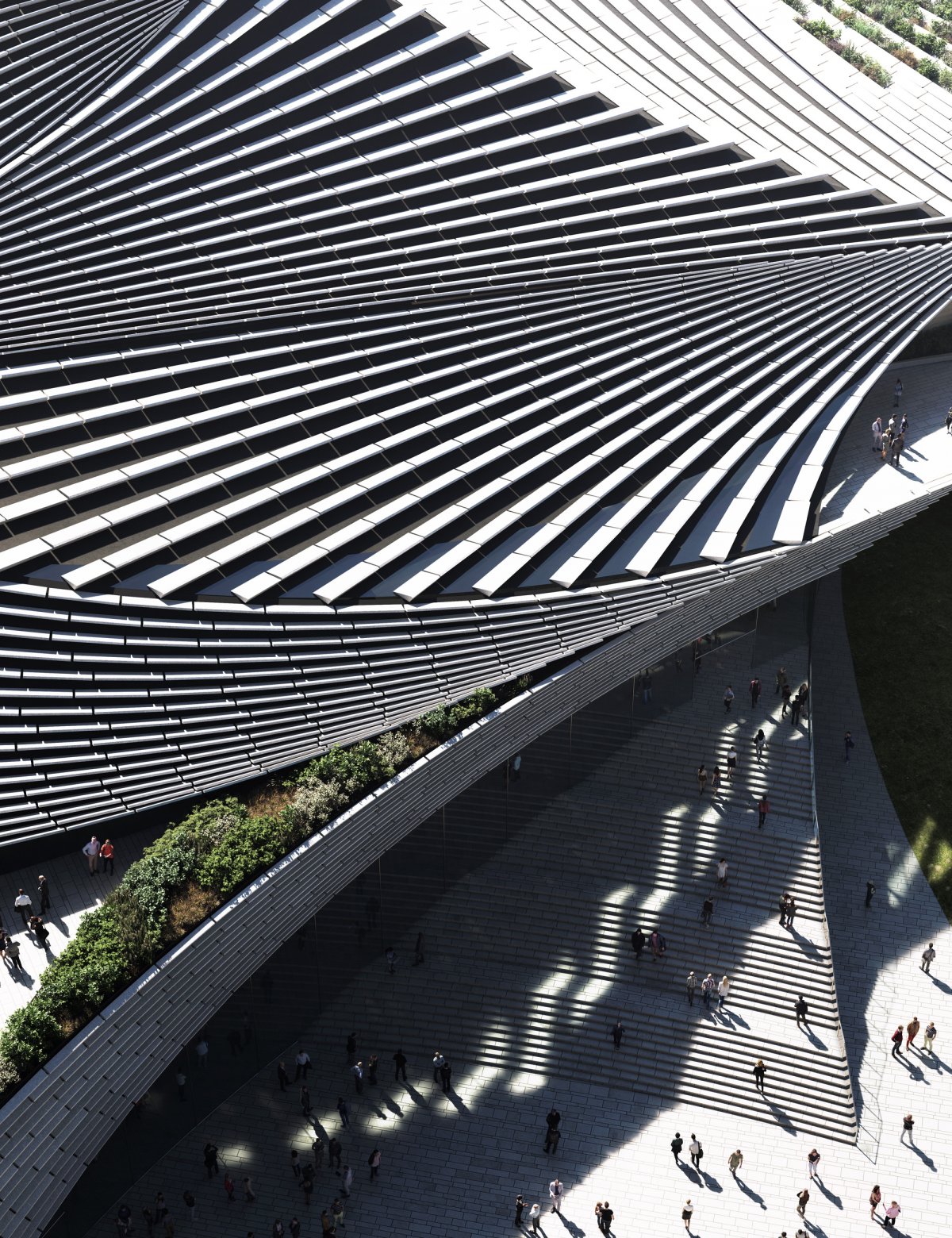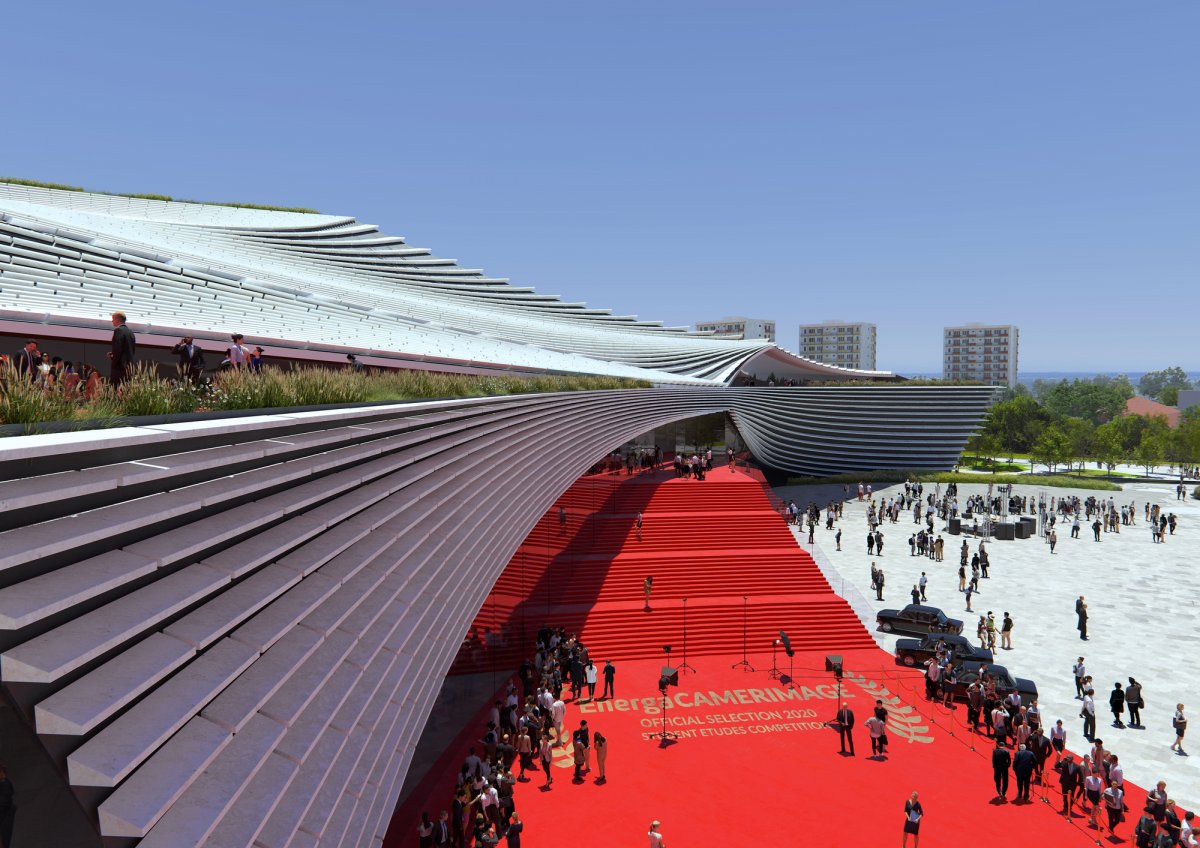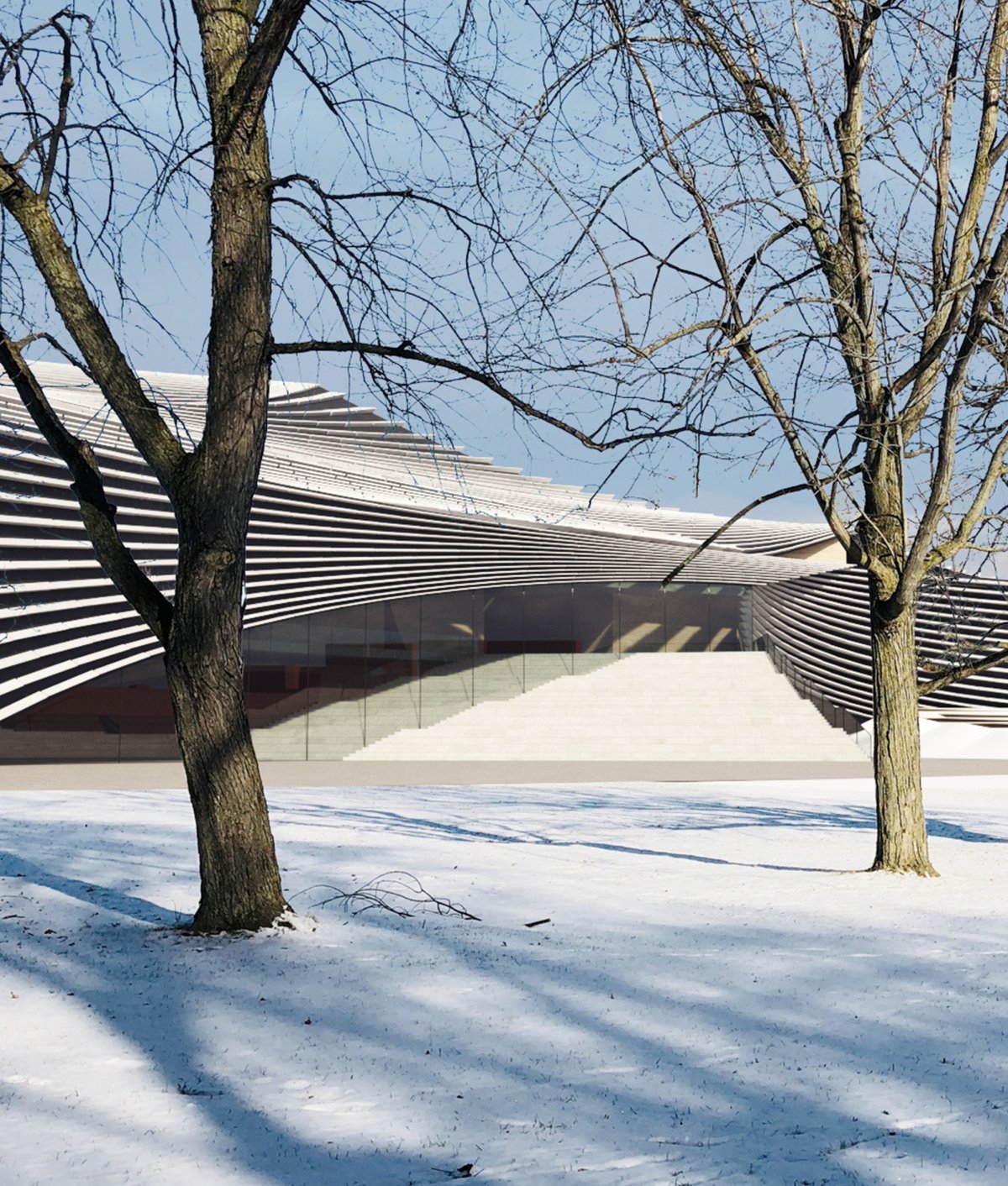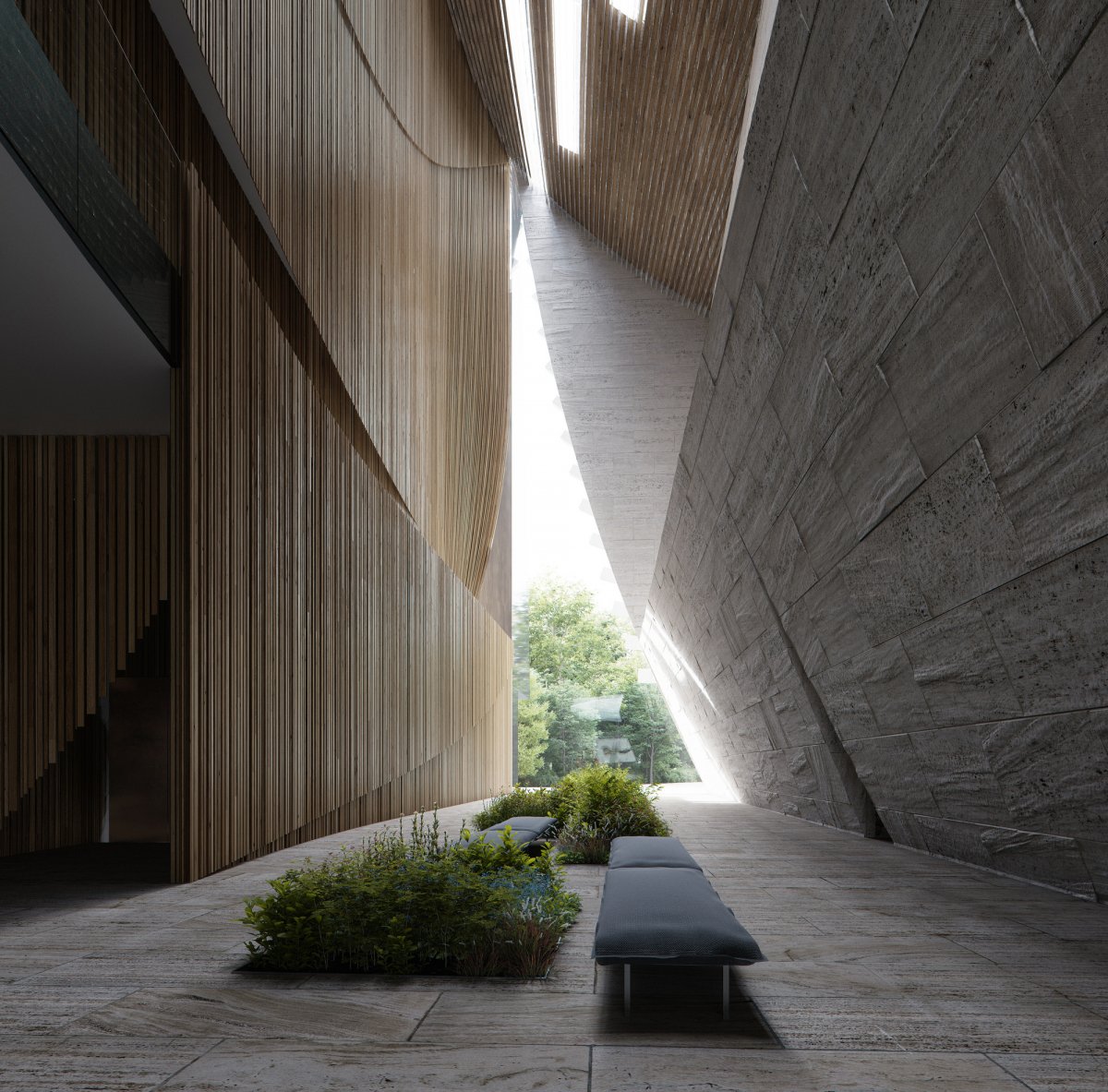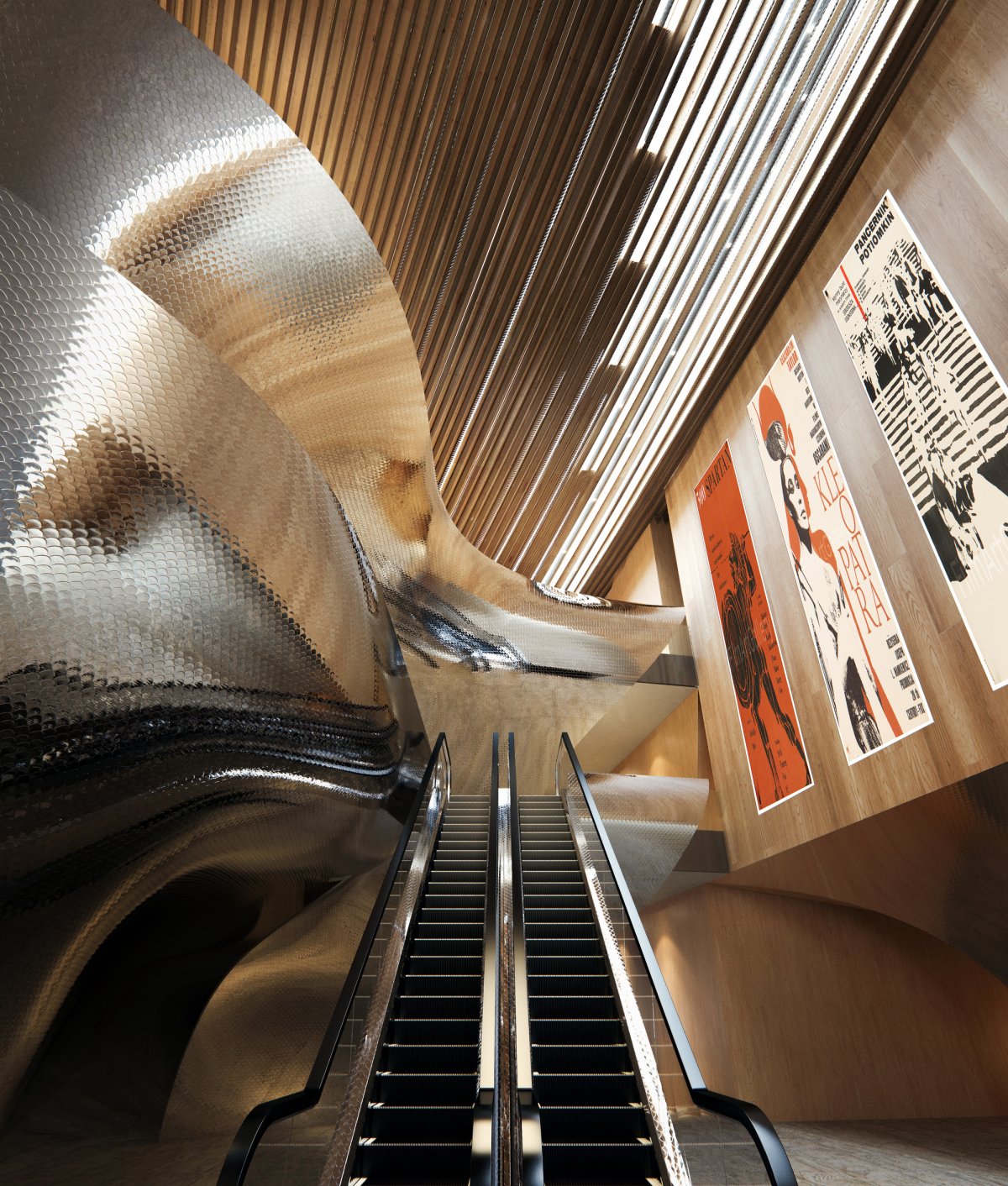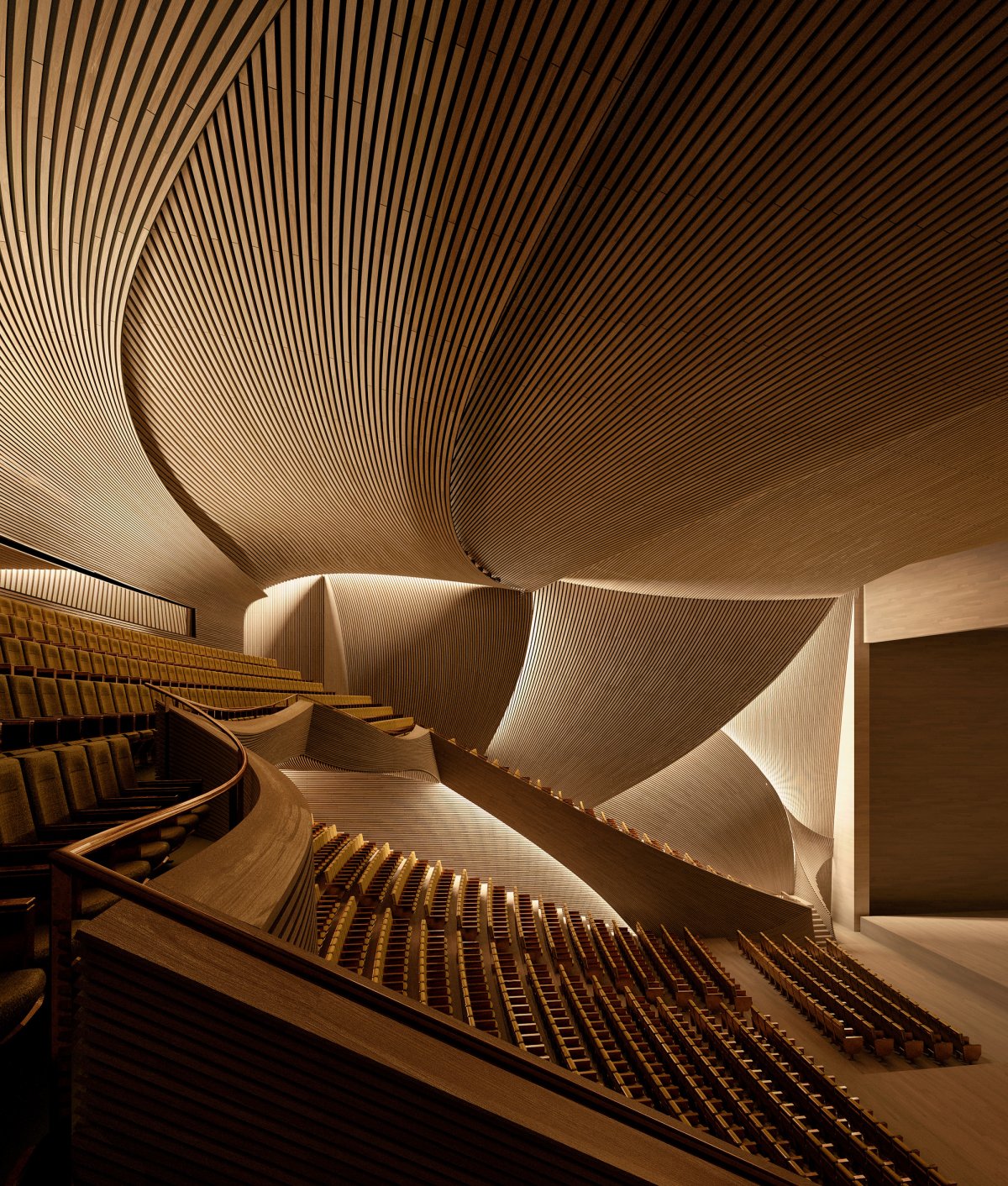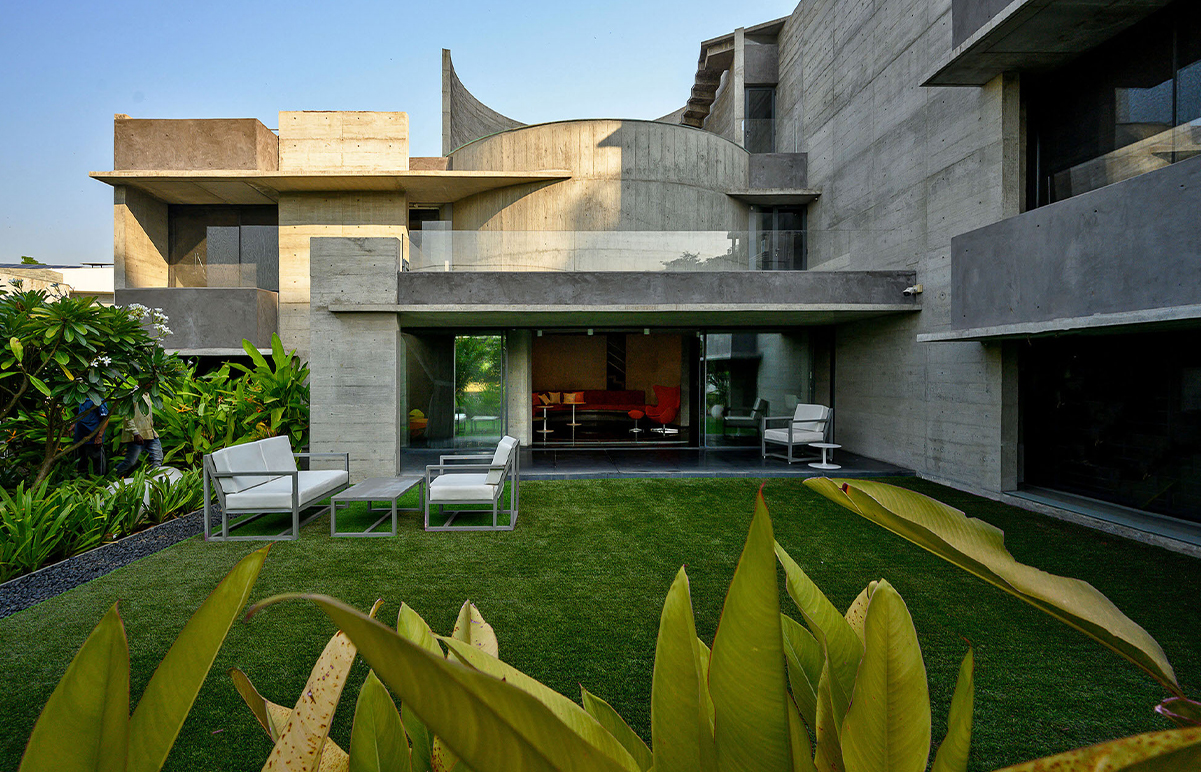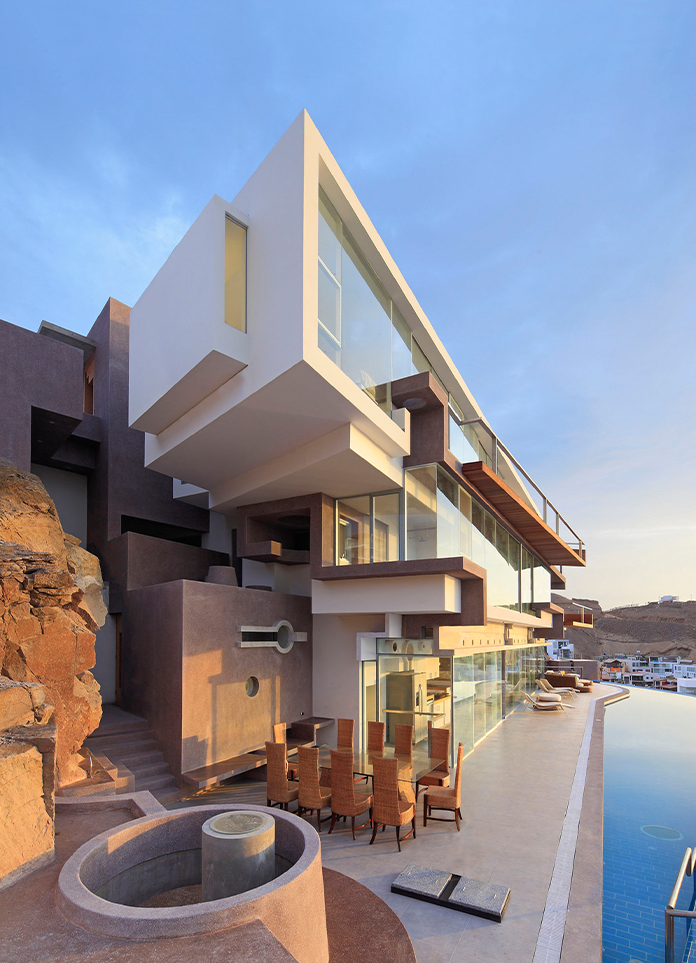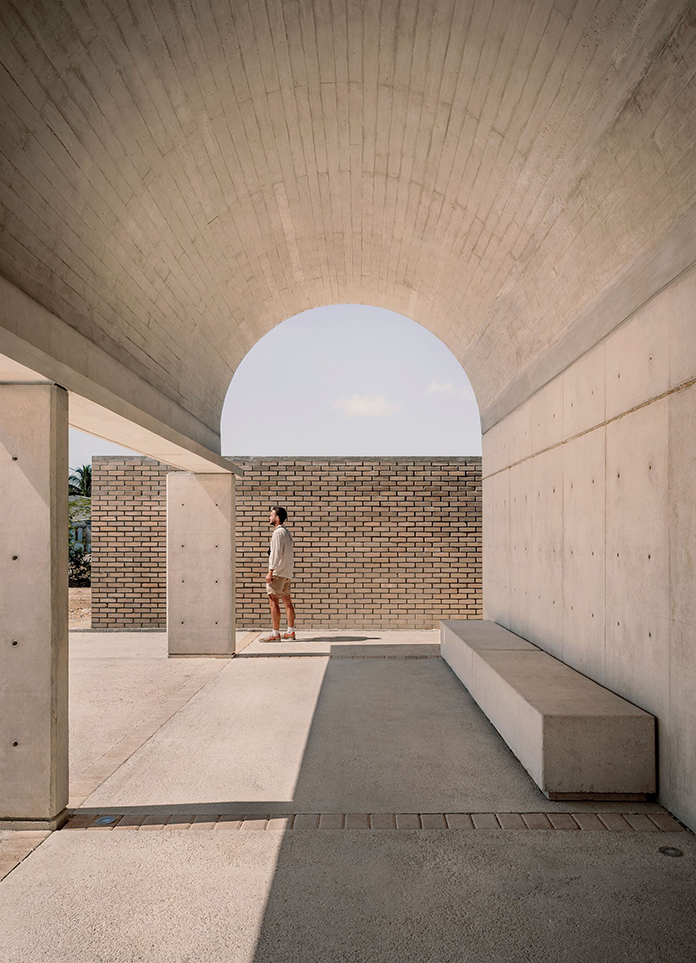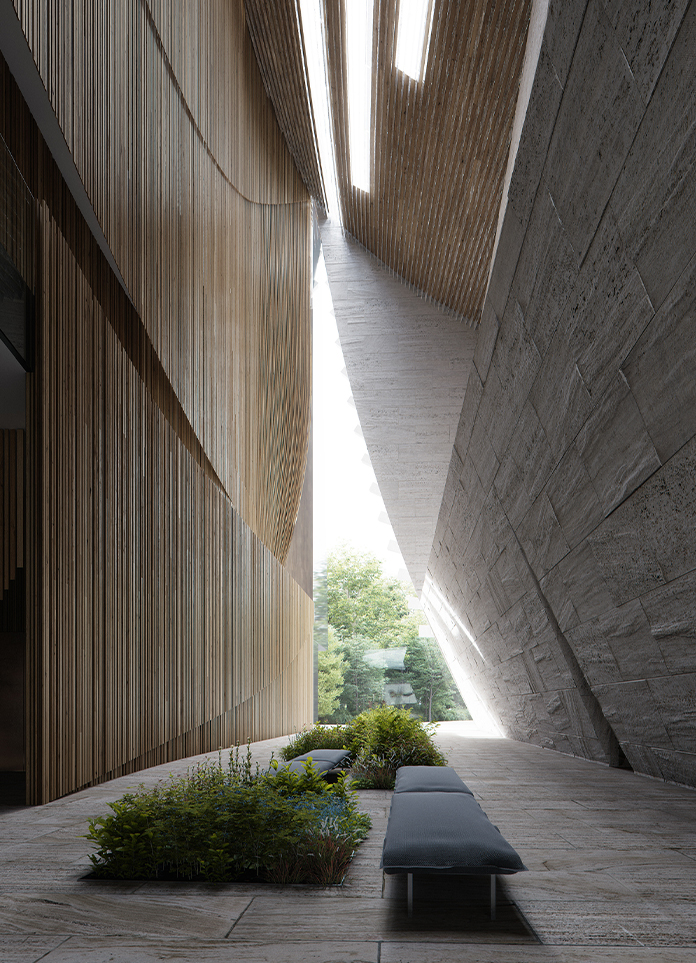
As part of the European Centre for Cinema CAMERIMAGE architecture competition, Kengo Kuma & Associates have designed a new iconic landmark as a "universal form of expression" for film and architecture, to be located in Toruń centre, Poland. The design, ranked second, interprets the metaphorical closure through the dynamic movement of the organic form of the structure, providing a unique space filled with musical and visual experiences for artists, visitors and locals.
The organic and light form of the centre hints from a distance at the unique aesthetic atmosphere that visitors will experience throughout the facility. The structural form of the building respects the surrounding environment and is consistent with the scale of the urban environment, including the buildings for the Ministry of Science and Technology, Marshal's office and Jordanki Concert Hall, as well as the extended blocks and historic buildings of the Old town. The form of the building, combined with a mixture of concrete and stone ornamentation, creates a "poetic, delicate and organic" composition that makes it a new landmark for the city.
Along with the design of the centre came a proposal to introduce a public square, bringing together all the activities of Toruń's new cultural centre. The design team wanted to focus on the sensory experience the site could produce, particularly through sight and touch, so they integrated and selected materials such as ceramic and wood to create different views along with the organic shape of the block and the structure of the multi-directional entry points.
Crossing the public square, visitors can see the circular green hills on the right and the dynamic shape of the movie studio on the left. This series of experiences aims to further establish architectural elements both externally and internally. The project aims to become a new focal point for residents, not only for festival purposes, but also for daily informal meetings and cultural activities carried out by all partners involved in Toruń cultural life.
- Words: Dima Stouhi


